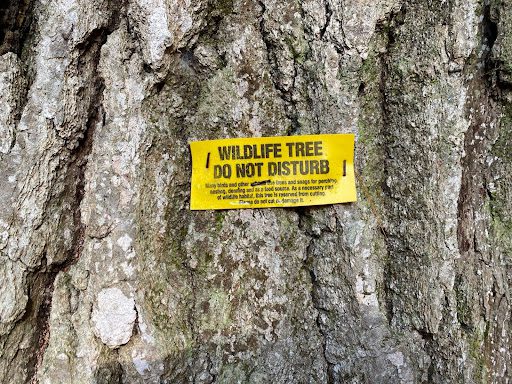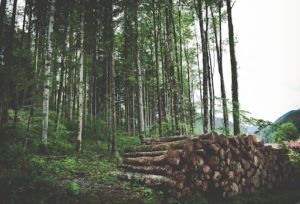Forests are one of the most important resources on Earth. Not only are we reliant on timber for structural lumber, paper, and heating homes, forests are also a major source of the oxygen we need to breathe, store carbon dioxide, and provide the ecosystem and habitat for thousands of species of animals.
As valuable as forests are to us, many do not take responsibility to care for and nurture our forests. In 2020 alone the tropics lost approximately 12 million hectares of tree cover, much of it from illegal logging and poor forest management practices. This has negatively impacted thousands of species and eliminated an unthinkable quantity of critically important habitat for endangered species.
There is, of course, a better way to practice forestry and logging. Responsible, sustainable forestry practices account for regeneration of harvested timber and maintain biodiversity and habitats for fauna. Let’s explore the responsible forestry we practice at Tall Pines Forest Management.
 What is “Responsible Forestry?”
What is “Responsible Forestry?”
Sustainable forestry is focused on maintaining and perpetuating healthy forests while also meeting the landowner’s economic and production needs. In practice, this means taking a scientific and measured approach to harvesting timber. A good forester considers the impact of logging on the biodiversity, habitat for fauna, the impact on other plants, soil integrity, water quality, and regeneration or growth rates of the woodlands being harvested. Additionally, with selection system harvesting, even a relatively small percentage of the total forest can yield an excellent profit for the landowner. Some landowners refer to this last regeneration method as “selective harvesting”.
The Process Of Forestry
Forestry is a complex art heavily based on science that broadly considers many factors. Without getting too bogged down in the minute specifics, let’s talk about what the process of responsible forestry looks like.
Understanding the Ecology Of the Woodland
The first step of any forestry project is assessing the land to be harvested, to make sure that harvesting won’t be excessively detrimental to the local environment and to assess the best approach to meeting the landowner’s objectives given the terrain, types of trees, fauna, and other flora on the land.
Generally, this includes a detailed projection of how a harvesting plan will affect the woodland for several decades. By figuring out what approach will yield the most consistent and effective density of tree cover, it is possible to balance both the needs of the ecosystem and the economic benefits to the landowner.
One critical element of this process is understanding what habitats might be affected by harvesting. This requires knowledge of what the local species are, what their various needs are, and how the forest is providing for those needs. With a full understanding of the composition of a woodland, it’s possible to grasp what elements are most important to conserve and which are less essential to the overall integrity of the ecosystem.
Harvesting
There are three common methods of regenerating forest stands through harvesting. Even aged methods like clearcutting, shelterwood, and uneven aged methods like single tree and group selection. Again, many landowners refer to this last set of methods as selective harvests. We will get into the differences between these approaches, but it’s important to understand that these approaches have a lot in common. All three, when practiced responsibly, are ethical ways to get economic and social value from forestland without destroying their ecological and environmental value. Each approach has a different balance of these priorities, however.
Clearcutting is an even aged regeneration method that is suitable for some timber types like pure or nearly pure stands of spruce and fir. Here the entire stand is removed in one entry. It is not generally advised as a forest management style in more mixed species forests that we encounter in southern Maine and New Hampshire. While this is a necessary tool for foresters to use in some situations like previously high graded stands or certain timber types, it is rare to see it used in southern New England.
Shelterwood harvesting, is an even aged regeneration method where the forest is cut and a new age class established in a series of entries typically spaced 5 – 15 year apart. The first entry identifies the best trees in the stand, the crop trees, and thins around them to maximize their growth potential. The second entry is where the forester is concerned about regenerating and establishing a new age classe of tree by removing a portion of the older age class. This entry typically removes 40-50% of the stand volume focused on removing the more poorly formed trees in the stand retaining the best trees for the third entry. That way the best trees in the stand are the parents of the newly established age class. The last entry is designed to release the regeneration established in the second entry. Many landowners prefer this to clearcutting and see it as a much more balanced approach to timber harvesting. This means there is always suitable habitat, adequate protection for soil, and a self-sustaining ecosystem with little change or negative impact on the overall system.
Selection system harvesting is an uneven-aged regeneration method meaning that it creates and maintains multiple, three or more, age classes that are tended with each harvest entry. This method employs more frequent harvest entries removing a lower volume with each entry and some consider it to be the most minimally disruptive approach to timber harvesting. Instead of removing and regenerating an entire age class in one entry, as is the case with clearcutting, selection system harvesting focuses on removing some of the mature and overmature trees while tending the younger age classes with each entry. This method, while generating less of a return for the landowner with each entry, does so with less of an impact on habitat and the ecological integrity of the forest. Again, many landowners use the term selective harvesting to describe this method.
Forest Regeneration
All three techniques, clearcutting, shelterwood and selection system are regeneration methods as they naturally regenerate forest quickly, and so manual replanting is often unnecessary.
However, especially if a specific species of tree is desired by a landowner, planting of seedlings of the desired species can be a helpful part of your forest management strategy.
Sustainability
A forester will assess the seed production of the trees prior to a harvest to ensure that there is an adequate seed source to achieve abundant regeneration. Many species of trees produce larger quantities of seed on a predictable cycle. Harvest entries should be timed to the degree possible to foster the tree species the landowner wishes to regenerate with cutting during these high seed producing years. There are other factors that may need to be taken into consideration including assessing the population of herbivores that prey on tree saplings (such as white-tailed deer, mice and squirrels) and other factors that can affect the natural regeneration of the woodland. While there is not much that can be done about the population density of these forest dwellers, their impact on regeneration can be quite severe and needs to be understood.
Ultimately, sustainability is about ensuring that future generations have access to the same resources and quality of life that we enjoy. Sustainable forestry is a prime example of this ideal. With proper management over the long term, a forest can be an economic and social resource that provides value indefinitely.
Building Habitats
In addition to the role forestry can play in sustaining woodlands, it actually presents opportunities to create habitat. There are a few ways this can be done, but by far the easiest and quickest is to use the slash from harvesting to create strategic habitat for small fauna. Many species can benefit from the forage and shelter that a well placed pile of slash offers. Especially in areas with reduced tree cover, this can be an excellent way to assist small woodland creatures that are made more vulnerable by reduced tree cover to predation by other species (especially avian predators). Further, there are techniques that can be employed for game birds like woodcock and grouse as well as deer and moose. Some landowners have specific objectives centered on creating habitat for these populations all of which can be built into their forest management/habitat plan
The Way Forward
Our relationship with woodlands is a complex one. We need forests and most of us respect and enjoy them. Yet, some continue to mismanage timber harvests. At Tall Pines Forest Management, we feel strongly that husbanding our forests with integrity and ethical management is the only reasonable and responsible way forward. If you’re ready to employ sustainable forestry practices, contact us today. We want to help you manage your woodlands ethically, sustainably, and profitably.


 What is “Responsible Forestry?”
What is “Responsible Forestry?”
0 Comments